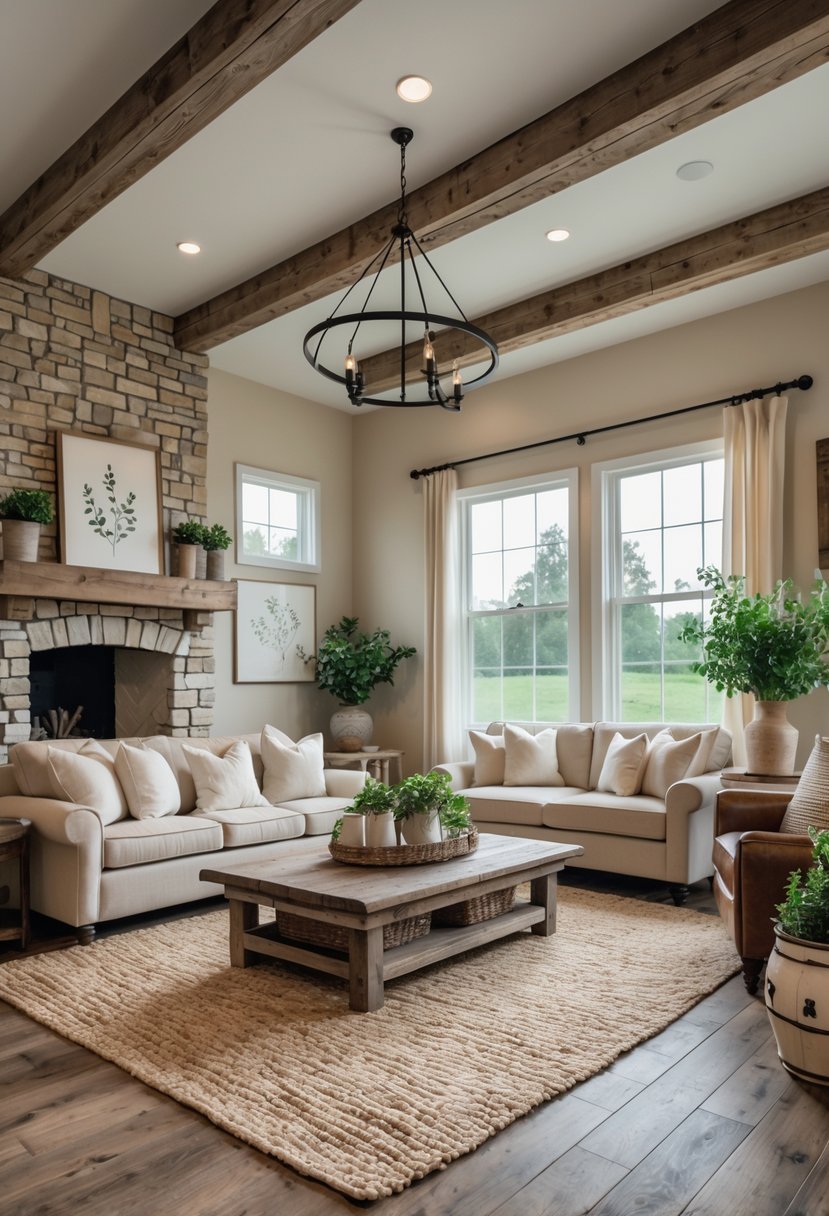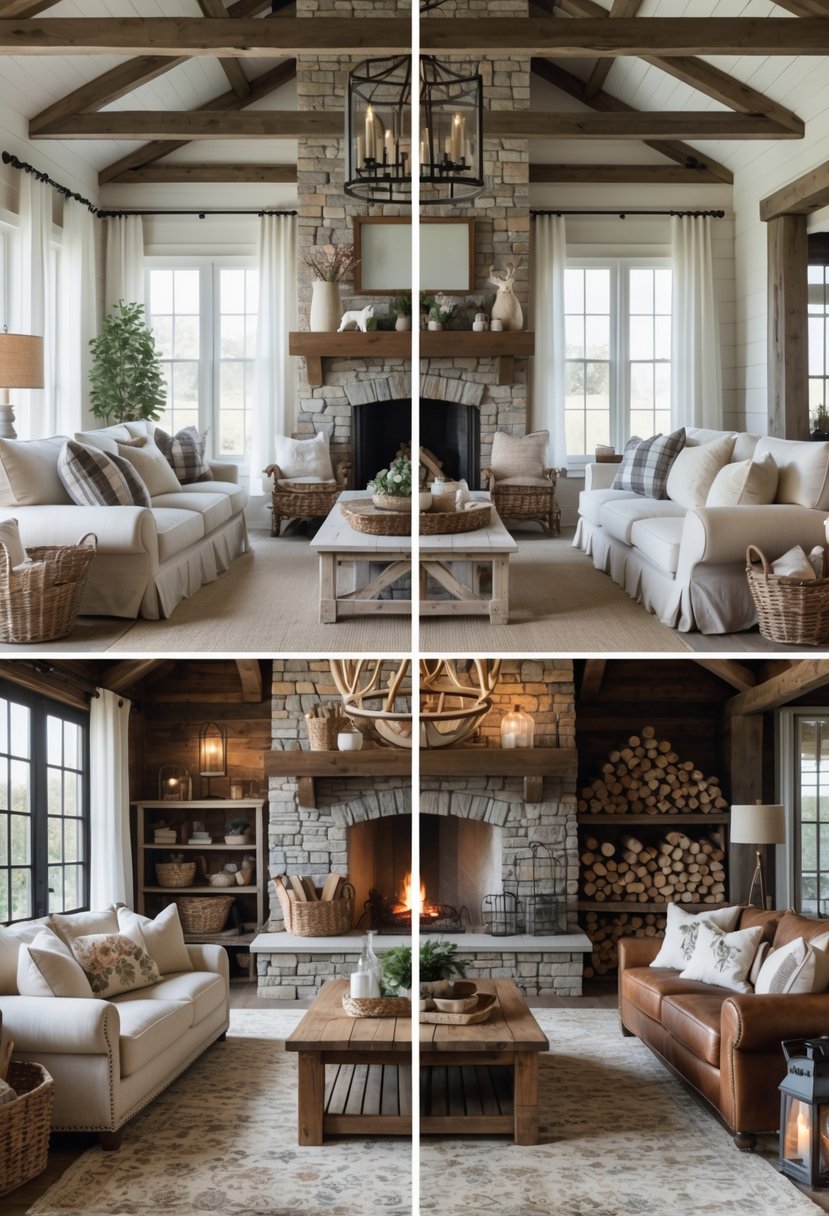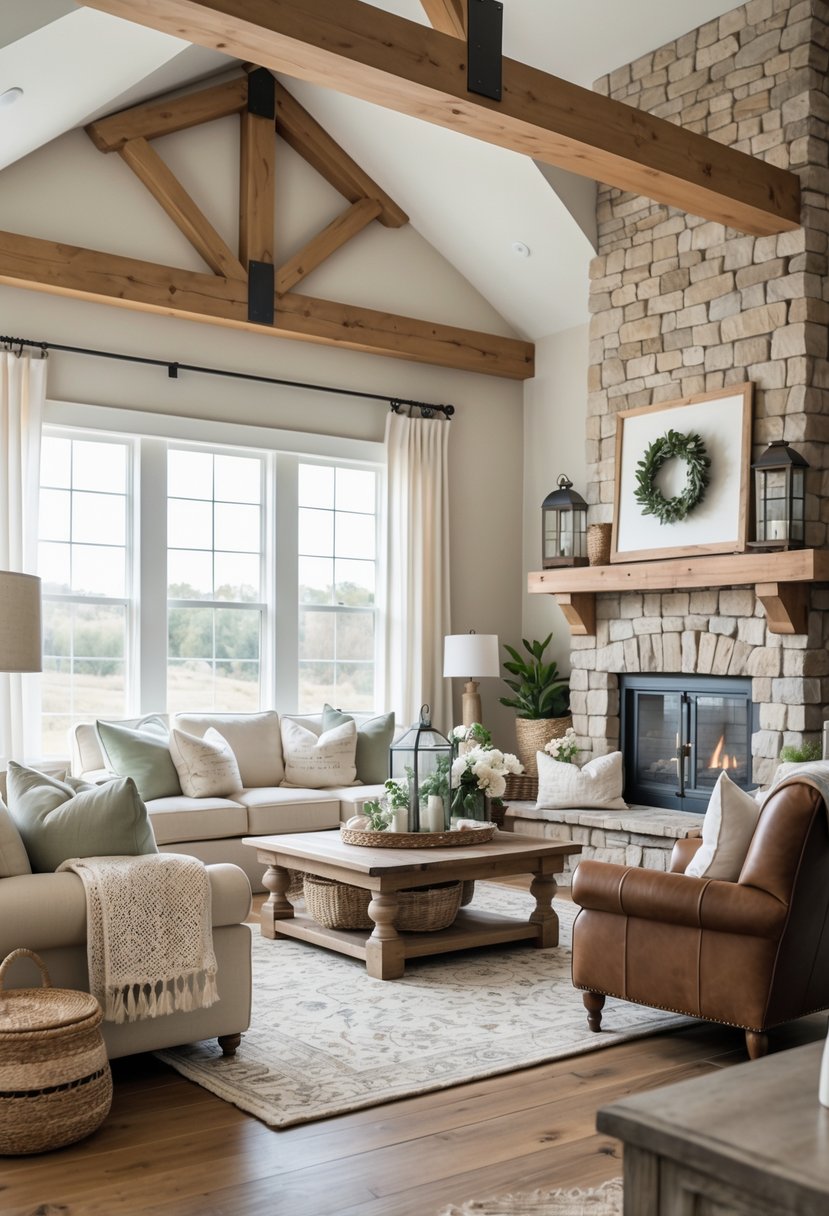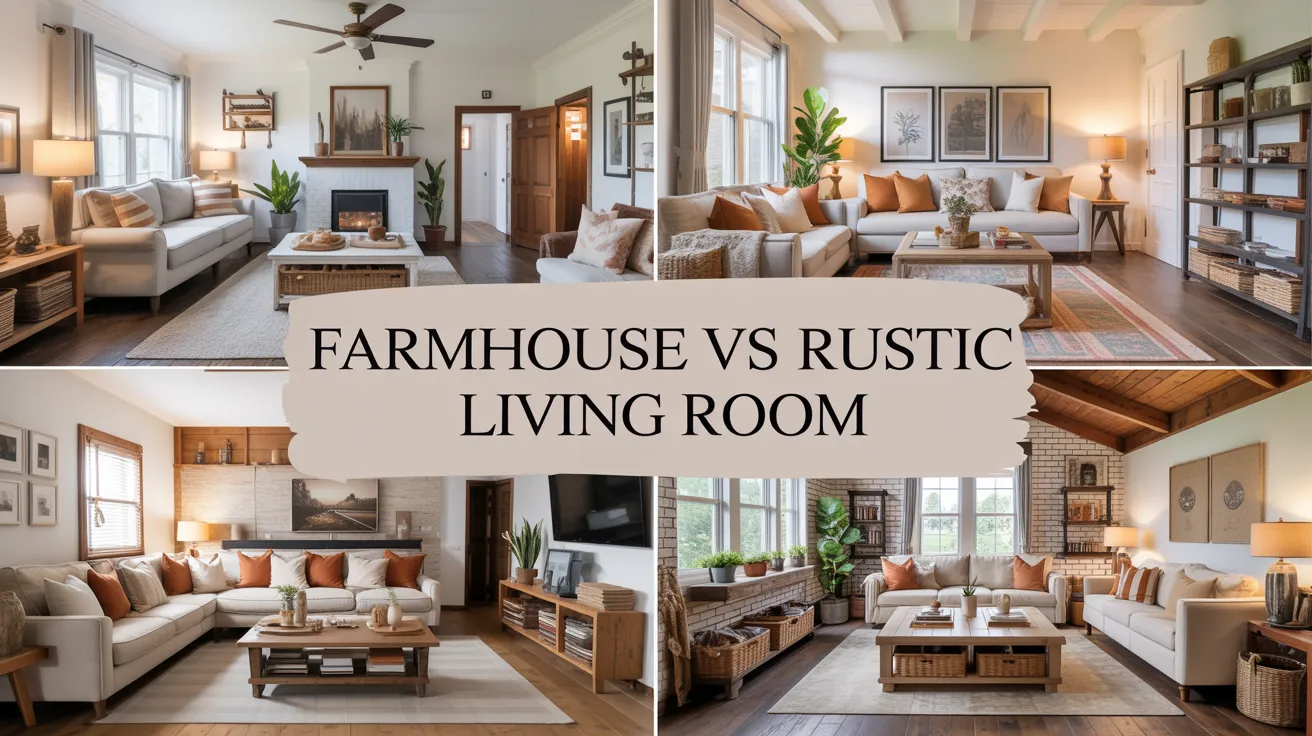Farmhouse vs Rustic Living Room: Key Differences & Design Tips
Farmhouse and rustic styles are often linked but have clear differences in a living room setting. Rustic design focuses on raw, natural materials with a rugged, worn look, highlighting imperfections to create an authentic, earthy vibe. It often uses darker colors and heavier, chunkier furniture.

Farmhouse style, on the other hand, builds on rustic elements but with a lighter, more polished approach. It emphasizes bright, neutral colors, clean lines, and practical yet cozy touches like shiplap walls or vintage-inspired decor. The goal is to create a warm, inviting space that feels lived-in and reflective of country life.
Farmhouse vs Rustic Living Room: Core Differences

Farmhouse and rustic living rooms both bring warmth and a natural vibe, but they focus on different details. The distinction lies in their design approach, color choices, and material use. Each style creates a unique atmosphere through specific elements that shape how a space feels and looks.
Foundational Design Principles
Rustic living rooms emphasize raw, natural beauty with a rugged, unpolished look. The style highlights imperfect surfaces and often embraces heavy, handcrafted furniture. It values authenticity and a connection to nature’s rough textures.
Farmhouse living rooms focus more on comfort and practicality with a polished, cozy charm. This style combines traditional country elements with simple, functional design. It includes vintage or classic pieces that create a homey and inviting space.
Both styles value natural materials but apply them differently. Rustic spaces lean on natural flaws and ruggedness, while farmhouse rooms use these materials as part of a clean and organized setting.
Typical Color Palettes and Finishes
Rustic living rooms often feature darker, earthy tones. Browns, deep greys, and muted greens dominate to reflect natural environments. Finishes are matte or distressed to emphasize weathered surfaces.
Farmhouse living rooms use lighter, more neutral colors. Whites, creams, soft greys, and pale wood tones create an open, airy feeling. Paint or whitewashing is common to brighten wood and give a fresh, subtle finish.
While rustic style embraces moodier hues to enhance a raw natural look, farmhouse prefers a light, soft palette that promotes brightness and warmth.
Signature Materials and Textures
Both styles rely on natural materials, but their texture choices set them apart. Rustic living rooms highlight reclaimed wood, rough stone, and metals with visible wear. Textures are tactile and irregular to showcase nature’s imperfections.
Farmhouse interiors also use reclaimed wood but often in smoother or painted forms. Soft textiles like linen and cotton add comfort, balancing rustic elements with cozy fabric. Woodworking details like shiplap walls and barn doors are common farmhouse signature touches.
In essence, rustic texture leans on rawness, while farmhouse pairs natural materials with refined, charming details.
Defining Decor, Furnishings, and Features

Farmhouse and rustic living rooms both use natural materials and a cozy vibe, but they differ in style details and how they combine elements. The look of furniture, textures, and architectural touches all play a key role in shaping each space’s atmosphere.
Farmhouse Living Room Essentials
Farmhouse living rooms focus on comfort and functionality with a clear country influence. Key furnishings include slipcovered sofas and wooden pieces with a light finish or whitewash. Tables often have clean lines paired with X-leg or turned leg designs.
Decorative accents like vintage mason jars, galvanized metal, and open shelving add a nostalgic, lived-in feel. The color palette leans toward soft neutrals—creams, whites, and light grays—enhancing an airy, bright atmosphere.
Farmhouse style often includes practical touches such as storage baskets and functional textiles like cotton throws and linen cushions. These elements create a welcoming space meant for daily family use, combining old and new items for balance.
Rustic Living Room Key Elements
Rustic living rooms highlight raw, natural materials and a rugged, handcrafted look. Furniture is typically chunkier, often made from reclaimed or distressed wood with visible knots and imperfections.
Stone fireplaces are a common feature, adding warmth and an earthy tone. The color scheme favors deeper, moodier hues like browns, dark greens, and grays, reinforcing a connection to nature.
Rustic decor favors authenticity over polish. Natural textures like leather, wool, and rough-hewn wood are common. Accessories may include vintage metals or handmade crafts, all contributing to a timeworn, genuine atmosphere.
Highlight Architectural Features
Architectural elements strongly shape both styles but in different ways. Farmhouse living rooms often showcase shiplap walls, barn doors, and exposed wooden beams, emphasizing craftsmanship and country charm.
Rustic rooms focus on rugged textures and structural details such as stone walls, reclaimed timber ceilings, or raw wood floors. These features showcase the beauty of natural aging and imperfection.
Both styles use these elements to anchor the room, but farmhouse design leans toward a refined, purposeful presentation. Rustic design embraces a broader, more weathered aesthetic that highlights durability and earthiness.
When comparing Rustic and Farmhouse styles, a few key differences stand out:
- Aspect: Rustic design feels rugged and natural, while Farmhouse style leans toward cozy and practical charm.
- Color Palette: Rustic interiors often use darker, moodier tones, whereas Farmhouse embraces light, neutral, and airy shades.
- Materials: Rustic spaces feature raw, weathered wood, metal, and stone, while Farmhouse design highlights polished wood, shiplap, and vintage elements.
- Atmosphere: Rustic décor conveys a time-worn, rugged look, while Farmhouse evokes a nostalgic, welcoming, and comfortable vibe.
Conclusion

Rustic and farmhouse living rooms both emphasize natural materials and a sense of warmth. However, rustic design focuses on rugged, weathered textures and darker colors, creating a raw and earthy atmosphere.
Farmhouse living rooms lean toward a lighter, airier feel with neutral palettes and a cozy, country-inspired look. They often feature practical elements and vintage touches to make the space inviting and functional.
While rustic style has a broader scope, including rugged natural materials like reclaimed wood and stone, farmhouse style is a more specific approach grounded in traditional country life.
Both styles share a love for simplicity and nature but give different vibes. Rustic offers a more natural, imperfect look, while farmhouse delivers a polished, lived-in charm.
Choosing between them depends on whether the goal is a relaxed, earthy space or a warm, welcoming country home atmosphere.

